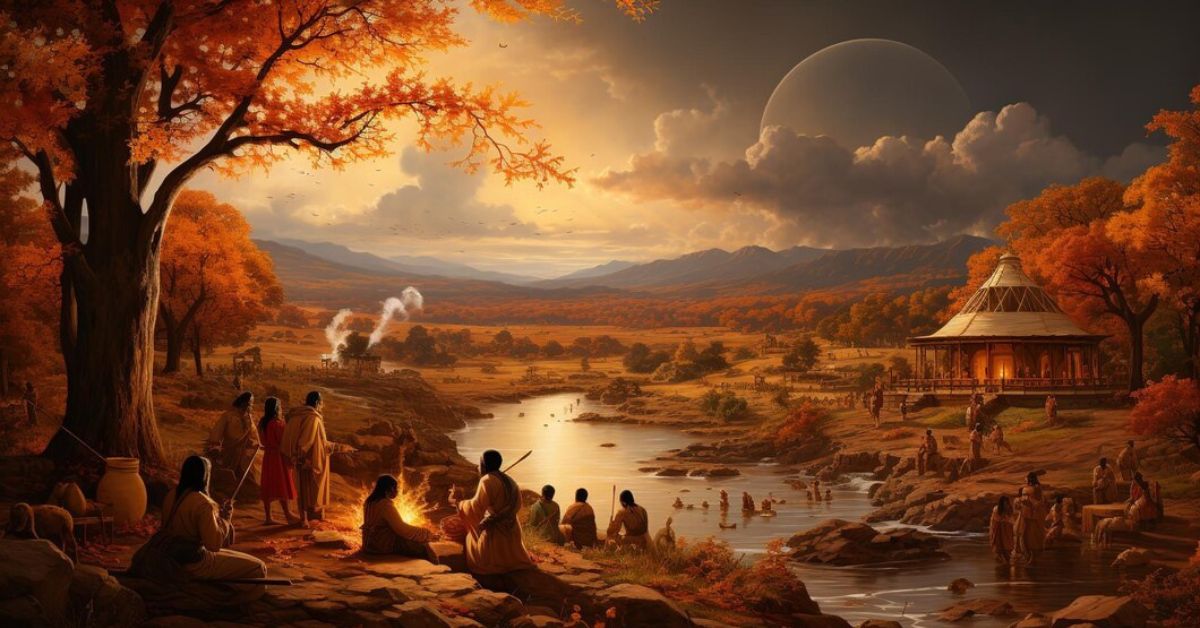Ciulioneros: A Deep Dive into Their Culture and Traditions
Hidden within the vibrant tapestry of cultural diversity, the Ciulioneros stand out as a unique and captivating community. Their traditions, rich history, and distinctive way of life paint a picture that is both intriguing and inviting. If you’ve ever wondered about the stories behind their customs or what makes their festivals so special, you’re in for a treat.
Join us on an exploratory journey as we unveil the essence of the Ciulioneros—delving into their culture, celebrating their heritage, and savoring their culinary delights.
Get ready to discover not just who they are but also why they hold such an important place in today’s world.
What is Ciulioneros?
Ciulioneros are a distinct cultural group known for their rich traditions and vibrant community life. Originating from a unique geographical region, they have developed a way of living that reflects both historical influences and modern adaptations.
At the heart of Ciulionero identity is their deep connection to nature. This bond shapes their customs, beliefs, and daily practices. It’s not just about survival; it’s about honoring the land that sustains them.
Language plays an integral role in their culture too. The dialect spoken by Ciulioneros carries stories passed down through generations, encapsulating wisdom and experiences unique to this community.
Their social structure is characterized by close-knit relationships where cooperation thrives. Family ties extend beyond bloodlines, fostering unity among members who share common values and goals. In essence, being a Ciulionero means embracing a lifestyle rooted in tradition while navigating the complexities of contemporary society.
History and Origins of the Ciulioneros
The Ciulioneros trace their roots back to a vibrant culture nestled in the heart of Central America. Their origins are steeped in rich traditions, blending indigenous practices with influences from early colonial interactions.
Historically, these communities thrived through agriculture and trade. They established intricate social structures that fostered cooperation among members. Oral histories passed down through generations reveal tales of resilience and adaptation.
As colonizers arrived, the Ciulioneros faced challenges but managed to retain elements of their unique identity. This fusion created a dynamic cultural tapestry that reflects both struggle and survival.
Today, remnants of this history can still be seen in their customs and rituals. The pride in their ancestry is palpable during celebrations where ancient stories come alive once more. Each narrative adds depth to the evolving story of the Ciulioneros, showcasing an enduring legacy that shapes their present-day community dynamics.
Culture and Traditions of the Ciulioneros
The culture of the Ciulioneros is a vibrant tapestry woven from their history and environment. Their way of life reflects a deep connection to nature, community, and ancestral practices.
Traditionally, storytelling plays a significant role in preserving their heritage. Elders pass down tales that highlight values such as courage, resilience, and respect for the land.
Music is another cornerstone of Ciulionero culture. Unique rhythms accompany dances during gatherings, celebrating milestones or simply enjoying time together. Instruments made from local materials create sounds that resonate with their identity.
Artisanship flourishes within the community too. Handcrafted textiles showcase intricate designs inspired by nature and mythology.
Family bonds are strong among the Ciulioneros; gatherings often revolve around shared experiences and mutual support. This sense of unity fosters both personal connections and cultural continuity across generations.
Festivals and Celebrations
Festivals and celebrations are vibrant expressions of Ciulioneros culture. These events bring the community together, showcasing their rich heritage.
One of the most anticipated festivals is the Festival of Lights. During this event, colorful lanterns illuminate streets, symbolizing hope and unity. Music fills the air as traditional dancers perform captivating routines.
The Harvest Festival also holds great significance for Ciulioneros. It honors agricultural traditions with lively parades and communal feasting. Families gather to share recipes passed down through generations.
Another highlight is the Water Dance Celebration, where locals engage in playful water games to mark the start of the rainy season. This festival emphasizes joy and renewal within nature’s cycles, fostering a sense of togetherness among participants.
These celebrations serve not only as entertainment but as vital reminders of identity and heritage for all Ciulioneros people.
Traditional Cuisine and Food
Traditional cuisine is at the heart of Ciulionero culture, reflecting their history and values. Meals often feature locally sourced ingredients, showcasing seasonal produce.
One staple food is maize. It appears in various forms, from tortillas to tamales. Each dish carries a story, often tied to family gatherings or community events.
Beans are another essential component. They are typically cooked with spices and served alongside rice for a nutritious meal that nourishes both body and spirit.
Herbs and spices play an important role too. Cilantro, garlic, and chili peppers add vibrant flavors that tantalize the taste buds while connecting diners to their roots.
Desserts also hold significance within Ciulioneros’ culinary traditions. Sweet treats like flan or tres leches cake bring families together during celebrations.
Sharing these meals fosters connection among people while preserving cultural heritage through each delicious bite.
Art and Music of the Ciulioneros
Art and music are vibrant expressions of Ciulioneros culture. Their creativity shines through intricate crafts, including textiles and pottery. Each piece tells a story, often depicting local legends or nature’s beauty.
Music plays a vital role in community life. Traditional instruments like the flute and drum set the rhythm for gatherings. Melodies resonate with emotions, connecting generations. Songs often reflect their history, celebrating both hardships and joys.
Dance accompanies many musical performances, adding visual flair to celebrations. Movements echo the rhythms of life in Ciulionero communities.
Street art is also gaining momentum among younger generations, blending traditional themes with modern techniques. This fusion keeps heritage alive while attracting new interest.
Through these artistic endeavors, the essence of Ciulioneros thrives in every stroke and note. The interplay between past influences and contemporary styles creates an ever-evolving cultural tapestry that captivates all who encounter it.
Modern Changes and Preservation of Tradition
The Ciulioneros face challenges in maintaining their cultural identity amid globalization. As modern influences seep into daily life, younger generations are torn between tradition and contemporary lifestyles. This dynamic is reshaping their customs and practices.
However, many community leaders actively promote the preservation of traditional values. Educational programs emphasize the importance of heritage, encouraging youth to embrace their roots while navigating a changing world.
Social media plays a pivotal role as well. Platforms serve as spaces for sharing stories, art, and music reflecting Ciulionero culture. These digital avenues foster connections that strengthen community bonds.
Moreover, local festivals have adapted to attract broader audiences without losing authenticity. By incorporating innovative elements alongside traditional performances, they ensure these celebrations remain relevant today.
The balance between embracing change and honoring traditions defines the evolving journey of the Ciulioneros in today’s society.
Conclusion
The Ciulioneros are a captivating culture with rich traditions that have stood the test of time. Their unique heritage offers insights into their way of life, connecting past and present.
Exploring their festivals reveals vibrant celebrations filled with joy and community spirit. The traditional cuisine tantalizes the senses, showcasing flavors that tell stories.
Art and music serve as expressions of identity, embodying emotions and experiences passed down through generations.
In an ever-evolving world, the commitment to preserving these customs shines brightly. Each effort made by the Ciulioneros to maintain their cultural integrity speaks volumes about their resilience.
As curiosity grows around this fascinating group, there’s much more to discover. Engaging with the Ciulioneros promises a deeper understanding of humanity’s diverse tapestry.
FAQS
What does the term “Ciulioneros” refer to?
The term refers to an indigenous group known for its distinct cultural practices and traditions rooted deeply in history.
Where do the Ciulioneros primarily reside?
The Ciulioneros mainly inhabit regions characterized by lush landscapes that have greatly influenced their lifestyle and agricultural practices.
What are some notable traditional celebrations among the Ciulioneros?
Some significant festivities include harvest festivals where community members gather to celebrate abundance through dance, food sharing, and rituals honoring ancestors.
How has modernization affected the lifestyle of the Ciulioneros?
Modernization has introduced new ideas while also challenging traditional practices; however, many within the community actively work towards preserving key aspects of their culture amidst change.
What role does music play in Ciulionero culture?
Music is an integral part of communal life for the Ciulioneros; it serves as a form of storytelling that conveys historical events as well as spiritual beliefs through rhythmic sounds and songs passed down generations.







